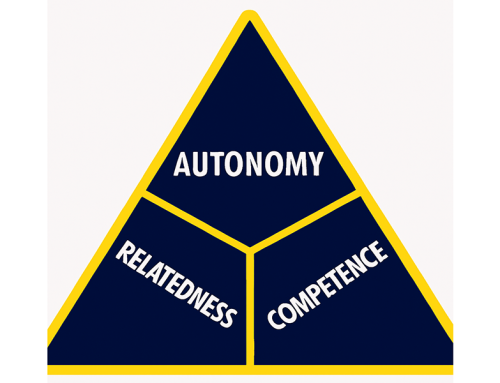How does an overweight, out-of-shape person melt away all the excess bodyfat, successfully achieving every one of their health and fitness goals – safely, sensibly, even with what appears to be a sustainable plan – but then promptly regain the weight, starting literally the day after they reach their goal?
Why do people enter body transformation contests, sometimes at serious physical and mental low points, then rise to the occasion in brilliant fashion, posting before and after photos so astonishing they make you wonder if it’s even the same person, only to fall back into old habits, starting minutes after the “after” photo is snapped?
Why are the weight loss relapse statistics still so dismal? The most optimistic statistic I’ve ever come across in a peer-reviewed academic journal is a 70% relapse rate. Most experts say the weight regain rate is an even more depressing 80 to 95%, at least over the long-term.
Somehow though, a handful of men and women burn the fat, transform their bodies, and keep their new shape, weight, muscle gains and fitness level. What’s the difference between these people?
There are answers to these questions and thankfully, many solutions. Today I want to share one of the best of them, because it’s one of the simplest and easiest to do.
Motivational speaker Brian Tracy once said, “Lack of planning is the cause of all failure.” When it comes to falling off the fitness wagon, Brian was right.
The irony is that these people who succeeded temporarily, but then slipped back, knew how to set goals and plan. They had good goals – big goals. They also had plans – great plans. That’s how they got the results they did in the first place. They simply didn’t maintain those results. Why?
One of the reasons most people slip back is because they forgot to ask one important question:
“What’s next?”
You can follow every goal setting guideline in the book (“SMART” goals), develop a program that elite trainers would call perfect, and execute that plan like a champion athlete and it will all work out just like you’d expect.
But if that plan was only a few months long and you didn’t give any thought to what comes next, then the moment the goal is reached, all motivation, all focus, all drive, all energy – physical and mental – will drain out of you like you pulled the plug in a tub.
You’re also likely to feel an emptiness, even a sadness or mild depression, immediately after that one goal is completed. This is not uncommon at the end of any epic journey. But that’s not a side effect of goal achievement, the problem is having nothing else to look forward to. With a goal completed, the happiness of pursuit is gone, and with nothing to take its place, you’ve created a void.
Voids are also known as vacuums, and a vacuum, by definition, begs to be filled. You’d think that continued training would fill that void, but the kind of training that makes you grow is hard and outside your comfort zone. Therefore, if you plan nothing new and do nothing new, activities of comfort are more likely to fill the void – automatically.
After a months-long streak of being on your best behavior, it seems illogical, even unfathomable, but when you consider the “void and vacuum” effect” combined with “moral licensing” (the psychological tendency to reward yourself for something positive you’ve done) it suddenly makes sense how the empty space so often gets filled up with unhealthy, fattening food and drink.
The solution is so simple if you think about it: Don’t leave much empty space between goals! Goal setting and planning are not once a year events, let alone one-time events. They are disciplines you practice your entire life without ceasing.
Having a great goal and a great plan for the next few months, but nothing after that is still “lack of planning,” and as Brian Tracy warned, it’s going to lead to relapse.
There’s a simple, specific type of planning you can do to prevent weight relapse and fitness failure from ever happening to you again.
Do this one thing and you will keep your results you’ve already gained and stay perpetually motivated. The way I describe it is:
“Think 1 goal ahead.”

This is advice, and also a challenge to you, which has to do with taking a long-term time perspective: Never set goals only one at a time. Set them two at a time – one for now, one for later.
Set a goal for a short term period, like the next 3 months (our Burn the Fat challenge body transformation contest is 3 months long), and don’t stop there. Ask, “What’s next?” Think 1 goal ahead. After you achieve this first goal, what then?
Be specific. What are you going to do the minute after you take your “after photo” or step on the scale and see your goal weight achieved? If there’s more fat to burn, what’s the next fat loss goal and time frame? Maybe even more crucial: If there’s NO more fat to burn, what THEN?
Even if you can see your abs, it’ doesn’t mean you’re finished. Fitness is never finished. Keep using it, or lose it.
What’s next?
- What will you do the day after your current goal is achieved?
- What will you do the week after that?
- How will you maintain your new lean body?
- What kind of fitness regimen will keep you muscular and strong?
- What new, even higher levels of fitness, physique, strength or vitality could you achieve?
- What’s your plan to get a sensible amount of rest, reward or downtime between goals without losing momentum? Could
- you set up that recovery time to make the next phase work even better? (Do you know how to use periozization and deloads? )
- Then how will you transition into the next phase of working hard toward the new goal?
- On what date will you start that next phase?
- How will the way you eat and exercise be the same as it was during your initial transformation? How will it be different, if it is different at all?
You can’t ask too many questions like these.
What is your next goal?
You don’t need the specifics of the plan for your next goal at first, because you’ll have time to sort that out that later. What you do need to know is what the next goal is. You simply need something new to look forward to.
What’s on the other side of this first mountain you’re currently climbing? If you don’t have another mountain to climb, there’s nothing in front of you but going downhill and into the valley, which quickly gets comfortable and turns into a rut.
Physique athletes like bodybuilders and figure competitors set a goal to get ripped for a contest, and they know they’re not finished when they get off that stage. If they don’t have another contest already lined up, they’re looking forward to the muscle building season, and that new and different type of goal is a nice change of pace and even a relief after a long contest prep diet.
A competition is an event and a goal. Being a competitor is an identity. Competitors are excited for that next goal. Thinking bigger, a competitor knows that their physique will never be finished – they’re not aiming to reach one destination, they’re on a path to achieve personal improvement and mastery of a craft, the same way a painter or martial artist would never be satisfied without continuing to improve their skills. And the craft isn’t the body or the ranking, the craft is the training and the lifestyle.
Can you think 1 goal ahead? Will you? If so, I challenge you to demonstrate it. Make it public somewhere, like your personal Facebook page, or at least tell one other person who supports you.
If you’re a member in our Burn the Fat Inner Circle, post in the forums that you read about the “Think 1 goal ahead challenge” and state your current goal and your 1 goal ahead.
This will signify your comittment that you’re not stopping when your present goal is achieved or your current training phase is complete.
If you’ve got no one supportive at all to share this with email me and share it with me.
What’s your goal for the next 3 months or so, then what’s your next goal after that?
As there is almost always a Burn the Fat, Feed the Muscle Body Transformation Challenge starting or ending at our Burn the Fat Inner Circle, there is never a lack of opportunity to put this idea into practice.
I hope you will join us in an official challenge, but even if you’re pursuing your fitness goals on your own this year, or you’re not a competitive athlete, I still urge you to take the “Think 1 Goal Ahead Challenge.”
If someone wanted to really impress me, they could tell me what their next two goals are, or show me their annual plan.
As every new year turns, do you merely make a quick New Year’s resolution, or do you take quality time to think through your goals for the year?
You set goals for the winter, but also think ahead to the spring. What then? What will you do in the summer?
As the summer turns to fall, and we return to winter, what goal will you pursue then?
Don’t wait – think ahead. And plan ahead.
Recall those relapse rates I mentioned. Weight loss maintenance is a challenge in our environment today, I would never dispute that. But is maintenance really that hard, or do we have an epidemic of short-term thinking, refusal to embrace long-term perspective and enjoying the journey for its own sake?
Goals are not end points, they are more like rungs on a ladder of an infinite climb or stepping stones on a path that does not end.
You have to repeat this process – forever. It would be easy to think longer-term once, then slip back into the only short-term goals trap. Then sure enough, you’re back into the cycle of in shape, out of shape, “Oh crap, how did this happen? I have to get back in shape again.”
If you’re always thinking (at least) 1 goal ahead, it implies that setting new goals for continuous improvement becomes a perpetual process.
Keep it up for a while and goal setting becomes a habit. Soon you realize you’re on a path. You always have a destination in front of you, and another just over the horizon, but there’s never an end point, only stepping stones that lead you out of old comfort zones and up to higher and higher peaks.
And when you think about your goals, please look beyond the scale or body fat percentage. Your have potential for improvement in many avenues. Never forget to set fitness and performance goals, because they’re a source of endless motivation, and you can reach little ones every single day. And remember that physical training is a path to personal and spiritual growth.
Even when you’re doing well, continue setting goals and thinking ahead. You don’t have to be sick to get better.
Having witnessed so much success from so many different types of people from all walks of life, but then seeing so many struggle to hold onto their fitness or maintain their weight, I am certain that this is some of the best and most powerful advice I can offer you.
Tom Venuto,
Founder & CEO, Burn The Fat Inner Circle
Author, Burn the Fat, Feed the Muscle
Related: Why Self Motivation Is The Best Motivation

Tom Venuto is a natural bodybuilding and fat loss expert. Tom is a former competitive bodybuilder and today works as a full-time fitness coach, writer, blogger, and author. In his spare time, he is an avid outdoor enthusiast, hiker and backpacker. His book, Burn The Fat, Feed The Muscle is an international bestseller, first as an ebook and now as a hardcover and audiobook. The Body Fat Solution, Tom’s book about emotional eating and long-term weight maintenance, was an Oprah Magazine and Men’s Fitness Magazine pick. Tom is also the founder of Burn The Fat Inner Circle – a fitness support community with over 53,000 members worldwide since 2006. Click here for membership details







Thank you! Your words are inspiring! I’m going to share it with my friends!